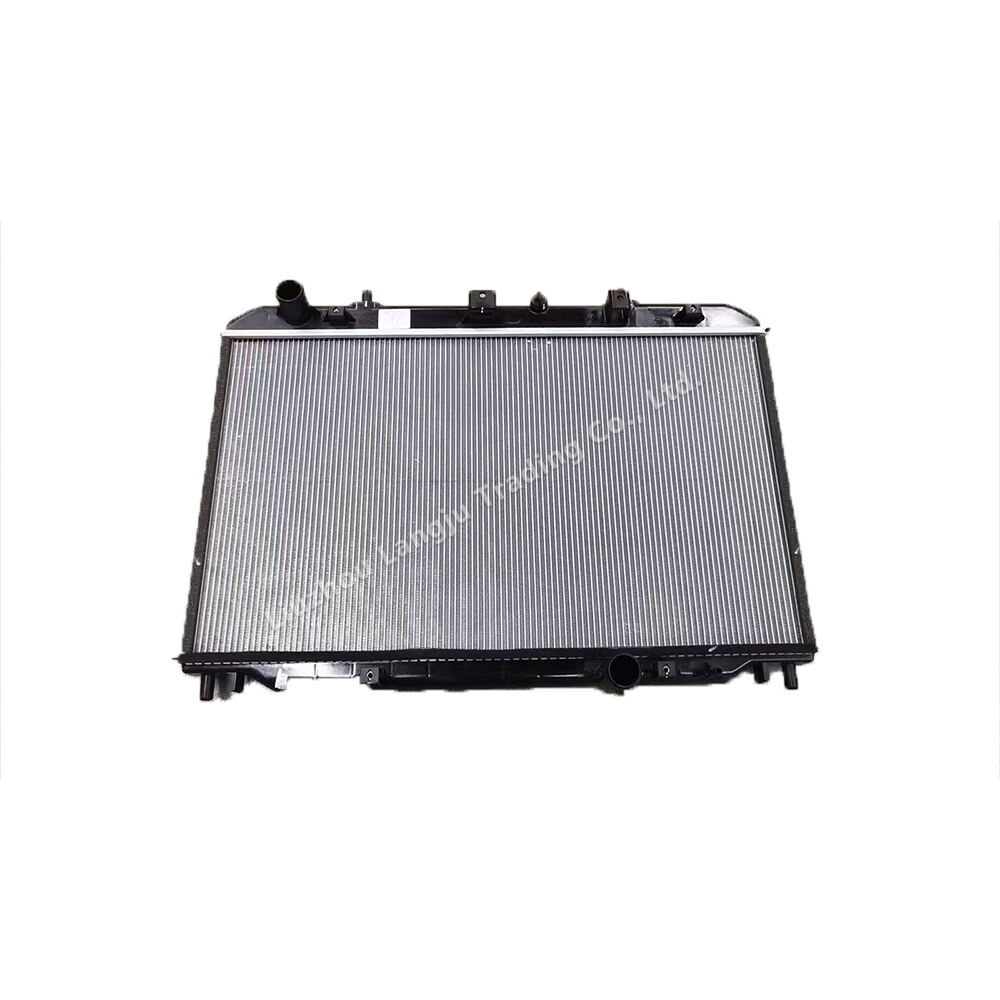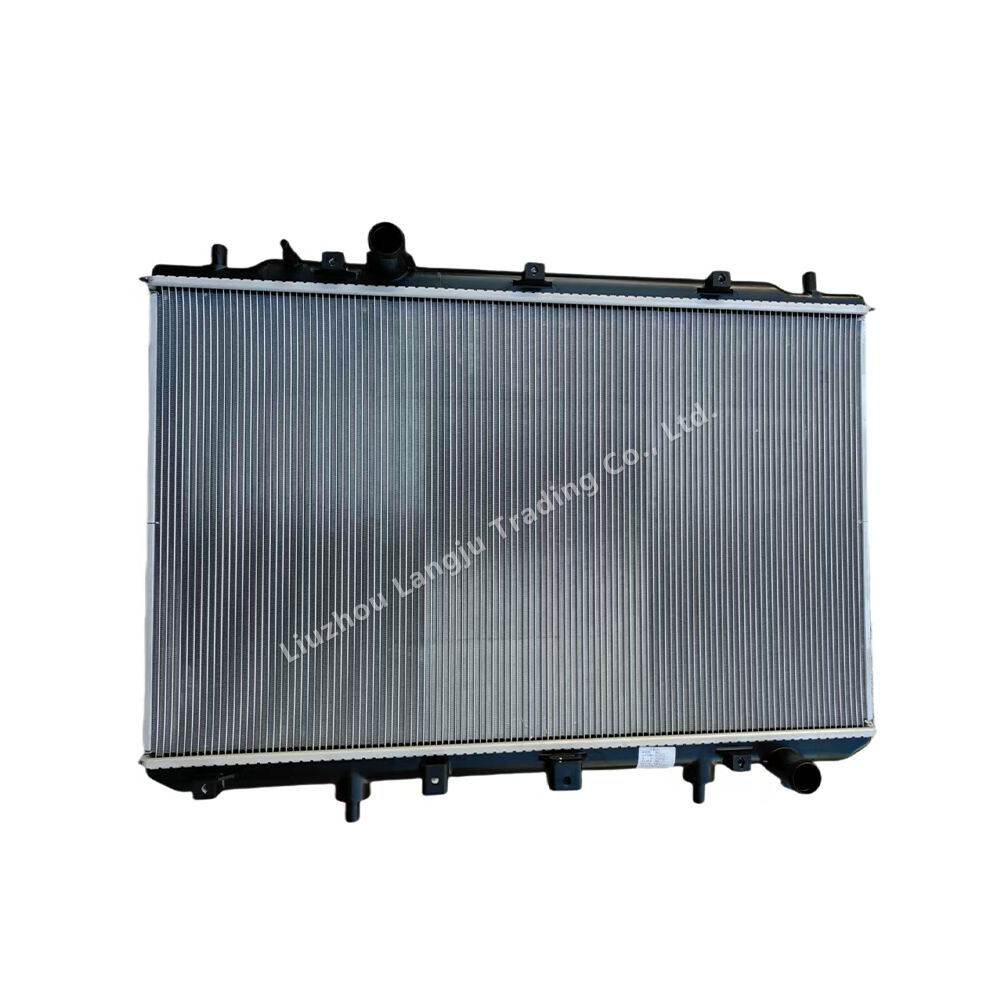The Physics of Heat Exchange in Combustion Engines
Getting a handle on thermodynamics helps explain why heat management matters so much in combustion engines. When fuel combines with air inside those engine cylinders, what happens next is pretty intense - basically an explosion that creates lots of heat. If we don't control this heat properly, all sorts of problems start happening to the engine parts. Heat naturally wants to move around, right? So it goes from hotter spots to cooler ones through what engineers call heat transfer. For combustion engines specifically, this means getting rid of extra heat from important engine areas before things get too hot and break down. Most mechanics will tell you proper cooling systems aren't just nice to have, they're absolutely essential for keeping these machines running smoothly over time.
Looking at how fast heat moves through engines really shows why good cooling systems matter so much. When an engine runs, it produces a lot of heat that needs to go somewhere or else things start breaking down. Most engine parts are made to handle specific temperature ranges, so if they get too hot, metal components can warp, gaskets might fail, and overall performance drops off. That's why proper heat management isn't just nice to have but absolutely necessary for keeping engines running smoothly over time. Mechanics know this well because they see firsthand what happens when vehicles don't have adequate cooling solutions.
Coolant Circulation: The Radiator's Primary Function
Getting coolant to flow properly through a radiator is really important for keeping an engine running smoothly at just the right temperature. Coolant is basically a special kind of liquid that keeps moving around the system all the time. As it goes past the hot parts of the engine block, it picks up extra heat and carries that heat over to the radiator itself. Once there, the radiator does its job by pushing most of that heat out into the surrounding air so the coolant gets cooled down again before going back into the engine. This whole loop works especially well when cars are stuck in stop-and-go traffic or pulling something heavy behind them, which puts extra strain on the engine.
The water pump plays a key role in any cooling system, moving coolant around both the engine block and radiator. Research shows when coolant flows properly through these components, engines run better especially under tough conditions like summer heat waves or heavy loads. Think of the water pump as the system's beating heart pumping life into the whole setup while making sure heat gets absorbed and released at regular intervals. If coolant doesn't circulate efficiently though, things start getting hot real quick inside the engine compartment which can lead to all sorts of problems from warped parts to complete breakdowns down the road.
Thermal Capacity of Coolants vs. Engine Heat Output
Looking at how different coolants handle heat, ethylene glycol and propylene glycol stand out for what they bring to the table. Both of these substances have pretty impressive thermal storage capabilities. What this basically means is they can soak up a lot of heat energy without getting too hot themselves. Why does this matter? Well, engines generate massive amounts of heat when running, sometimes enough to cause serious damage if not managed properly. The fact that these coolants can take in all that heat and then release it effectively makes them essential for keeping engine temperatures stable. Without good heat management, we'd see a lot more breakdowns from overheating components across various machinery applications.
Studies back up how effective these coolants really are, especially when dealing with different weather conditions across the globe. Take ethylene glycol as an example. It works great at transferring heat away from engines, which makes it a good choice for places where temperatures get really hot. On the flip side, there's propylene glycol that people tend to go for in areas where environmental concerns matter more because it doesn't contain those harmful chemicals we all try to avoid nowadays. Maintaining proper engine temperature isn't just about keeping things running smoothly either. Cold starts can wear out parts faster over time, so picking the right type of coolant matters quite a bit depending on what kind of climate someone operates in and what specs their particular engine has.
Coolant Composition: Ethylene Glycol vs. Propylene Glycol Solutions
What kind of coolant goes into a car matters a lot for how well the cooling system works, and most people end up choosing between ethylene glycol and propylene glycol. Ethylene glycol has become popular because it handles heat really well thanks to its high boiling point and thick consistency, which makes it great for cold weather driving. On the flip side, propylene glycol doesn't harm wildlife if spilled and is better for the environment overall, even though it doesn't perform as well in extreme temperatures. While ethylene glycol does a good job keeping engines from getting too hot or freezing solid in winter, there's definitely a downside since it's poisonous to animals and plants. The propylene version might need checking more regularly when temps climb because it breaks down faster under intense heat. Most mechanics will tell drivers to pick whichever fits their situation best considering where they live and what local laws say about fluids in vehicles, since neither option is perfect for every scenario.
Thermostat Operation in Temperature-Sensitive Flow Control
Knowing how thermostats work in car engines really matters because they control when coolant flows through the system depending on how hot the engine gets. Basically, these little devices open up when things get too warm and close again once temperatures drop back down. This helps keep the engine running smoothly without getting too hot. If a thermostat isn't working right, it can mess up the whole system. Cars might run inefficiently or even break down completely from being too hot. Mechanics often see thermostat problems as one of the main reasons why engines overheat, which shows just how important these components are for keeping vehicles running properly. Regular maintenance checks should include looking at the thermostat condition since replacing it before it fails can save lots of headaches later on down the road.
Radiator Fins: Maximizing Surface Area for Efficient Cooling
Radiator fins really matter when it comes to getting the most out of cooling systems because they help spread out heat much better. The way these fins are built actually creates more space for heat to escape, which means the coolant inside can transfer its warmth to the surrounding air faster. Different kinds of fin designs make a big difference too. Take louvered fins versus straight ones for example. Most mechanics know from experience that those angled louvered designs let air flow through them much better, giving engines a cooler run compared to plain straight fins. When looking at actual performance numbers across different vehicle models, there's definitely something to this relationship between how fins look and how well they work. Optimizing these structures isn't just theory stuff either. Car manufacturers spend time figuring out what shapes work best for their particular engines. After all, without proper heat dissipation through those radiator fins, engines would overheat pretty quickly during normal operation.
Optimal Temperature Ranges for Combustion Efficiency
Keeping internal combustion engines within the right temperature window makes all the difference when it comes to how well they burn fuel. Most engines hit their sweet spot somewhere around 190 to 220 degrees Fahrenheit, where everything burns cleanest and works as intended. When temps drift outside this range, fuel economy takes a hit since the engine has to compensate just to keep going at normal power levels. Run too cold and the fuel doesn't fully combust, which wastes gas and pumps out more pollution than necessary. According to research from the Department of Energy, even small drops in combustion efficiency translate into noticeable losses in mileage. That's why staying within those ideal temps matters so much for saving money at the pump while also doing our part for cleaner air.
Preventing Thermal Stress on Engine Components
The constant expansion and contraction from heat really takes a toll on engine parts over time. When metal gets hot then cools down repeatedly, it starts to wear out and eventually fails. Think about those key parts like engine blocks, head gaskets, and pistons that get warped or cracked after years of dealing with this thermal stress. Keeping the radiator maintained regularly makes all the difference in controlling temperatures and cutting down on this kind of damage. A well functioning cooling system means no overheating problems, so those expensive engine components last longer than they otherwise would. Mechanics will tell anyone who'll listen that checking coolant levels and inspecting hoses isn't just good practice but essential work. The Automakers Association actually reports around 30% fewer breakdowns when folks stick to basic cooling system maintenance schedules. That statistic alone should convince anyone worried about their car's future reliability to make these checks part of regular service routines.
Correlation Between Cooling Efficiency and Emissions Control
Good cooling systems play a big role in keeping engine emissions under control while balancing how well the engine runs against what's good for the environment. When cooling works better, engines stay at just the right temperature so fuel burns properly, which cuts down on bad stuff going into the air. Engines that don't get enough cooling often run too hot, messing up how fuel burns and pumping out more nitrogen oxides and carbon monoxide than they should. The EPA has actually found that when cooling systems work as they're supposed to, emissions drop around 10 percent give or take. So putting money into proper cooling isn't just about making engines last longer or perform better. It really helps cut pollution levels too, since engines simply run cleaner when kept within their ideal operating range.
Identifying Coolant Leaks and Pressure Loss
Spotting coolant leaks early in a car's radiator system makes all the difference when it comes to keeping engines running properly. Most people notice something's wrong when they catch that distinctive sweet odor coming from the engine area, see wet spots forming underneath their car after parking, or keep finding themselves topping off the coolant reservoir more frequently than normal. Leaks typically happen because rubber hoses degrade over time, radiators get damaged during rough driving conditions, or those sealing gaskets simply give out after years of heat exposure. Don't ignore these problems since even small drips eventually cause big trouble. When coolant escapes, pressure drops in the entire cooling system, making it harder for the engine to stay within safe operating temperatures. Mechanics report seeing roughly 40% of breakdowns actually trace back to cooling system malfunctions. That's why smart drivers make checking for leaks part of routine maintenance rather than waiting until the temperature gauge starts climbing toward dangerous territory.

Recognizing Sediment Buildup in Radiator Channels
When sediment builds up inside radiator channels, it really messes with how well the radiator works and cools down the engine. Coolant running through those channels picks up minerals and dirt over time, which gets stuck and blocks proper flow while making heat transfer less effective. People often notice problems when their car starts overheating even though the radiator looks full of coolant. Checking for this kind of buildup should be part of regular maintenance routines. A good way to tackle the issue is flushing out the radiator system. This process gets rid of existing sediment and stops new stuff from forming, so radiators tend to last much longer than they would otherwise. Most mechanics suggest getting these checks done about every 30k miles or so, maybe twice a year if someone drives in harsh conditions. Sticking to this schedule helps avoid big headaches later on and keeps vehicles running smoothly without unexpected breakdowns.
Diagnosing Thermostat Failure Symptoms
When a car's thermostat goes bad, it really messes with how the engine controls its temperature. Common signs are when the temperature gauge jumps around, the engine gets too hot or stays too cold, and sometimes just gives all sorts of weird readings. Mechanics usually check for thermostat problems using tools like multimeters or those infrared thermometers to see if the thermostat is stuck either fully open or completely closed. According to various automotive studies, engines with faulty thermostats can lose around 15% efficiency, which is why getting accurate diagnoses matters so much. Regular checks on thermostat operation combined with replacing them when necessary makes a big difference in keeping engines running properly. This helps prevent overheating issues and actually extends how long a vehicle lasts overall.
Heat-Induced Engine Warping and Seal Degradation
A failed radiator leads to overheating problems that can really mess things up for engines. The whole point of a radiator is to get rid of excess heat, so when it stops working properly, temperatures inside the engine just keep climbing. What happens next? Metal parts start to bend out of shape and those rubber seals begin to break down or develop cracks. Oil starts leaking everywhere and the whole engine becomes vulnerable. A study put out by the National Automobile Dealers Association actually found that fixing these kinds of issues can cost anywhere from several thousand dollars upwards depending on what exactly went wrong. Regular radiator checks aren't optional either since ignoring them means dealing with both mechanical headaches and wallet draining expenses down the road.
Cascading System Failures in Overheating Scenarios
If a car's radiator starts overheating, it doesn't just affect one part but creates a whole mess of problems throughout the vehicle. The engine gets too hot and then all sorts of things start going wrong - sometimes the car stalls completely, other times there are weird electrical glitches, and occasionally even the transmission acts up. Radiators don't work in isolation either. They're connected to everything else through wires, belts, hoses, and coolant lines. Mechanics see this all the time at repair shops. Many customers come in thinking they need a simple radiator fix only to find out their alternator is fried or their exhaust system needs replacing because the heat damaged those parts too. That's why getting radiator issues fixed right away matters so much. A small repair today prevents a mountain of expensive headaches down the road when multiple systems fail at once.
Cost Comparison: Maintenance vs. Engine Replacement
Keeping radiators in good shape saves money in the long run when compared to paying thousands for a whole new engine. Simple things like flushing out old coolant or looking for small leaks don't cost much but make a big difference in how long cars last. Consumer Reports says most people spend about $200-$400 per year on these basic checks, while getting a new engine often runs over five grand. The math definitely favors fixing problems early rather than waiting until something breaks down completely. Regular checkups protect engines from damage and keep vehicles running reliably without surprises at the repair shop.
FAQ
Why is efficient heat regulation important in combustion engines?
Efficient heat regulation is crucial in combustion engines to prevent components from overheating and ensure optimal performance. It helps in transferring excess heat away from critical areas, maintaining engine integrity and avoiding damage.
What are the differences between ethylene glycol and propylene glycol coolants?
Ethylene glycol offers excellent thermal performance with a high boiling point, ideal for colder climates but poses environmental risks due to its toxicity. Propylene glycol is less toxic, making it suitable for eco-sensitive regions, but has lower thermal efficiency, requiring more frequent maintenance.
How does thermostat failure affect engine efficiency?
Thermostat failure impacts engine efficiency by disrupting precise temperature regulation, leading to potential overheating and inefficiencies. Regular checks and replacements can prevent disruptions and maintain optimal engine performance.
How can sediment buildup affect radiator efficiency?
Sediment buildup in radiator channels can reduce coolant flow and heat dissipation, leading to overheating. Regular inspections and flushes are recommended to prevent buildup and extend the radiator's lifespan.
Table of Contents
- The Physics of Heat Exchange in Combustion Engines
- Coolant Circulation: The Radiator's Primary Function
- Thermal Capacity of Coolants vs. Engine Heat Output
- Coolant Composition: Ethylene Glycol vs. Propylene Glycol Solutions
- Thermostat Operation in Temperature-Sensitive Flow Control
- Radiator Fins: Maximizing Surface Area for Efficient Cooling
- Optimal Temperature Ranges for Combustion Efficiency
- Preventing Thermal Stress on Engine Components
- Correlation Between Cooling Efficiency and Emissions Control
- Identifying Coolant Leaks and Pressure Loss
- Recognizing Sediment Buildup in Radiator Channels
- Diagnosing Thermostat Failure Symptoms
- Heat-Induced Engine Warping and Seal Degradation
- Cascading System Failures in Overheating Scenarios
- Cost Comparison: Maintenance vs. Engine Replacement
- FAQ

